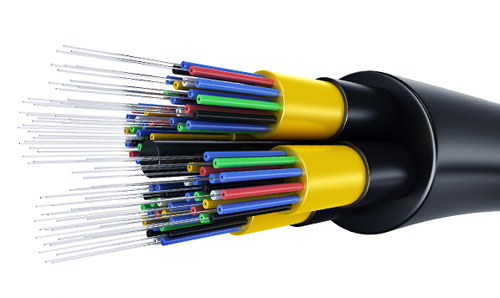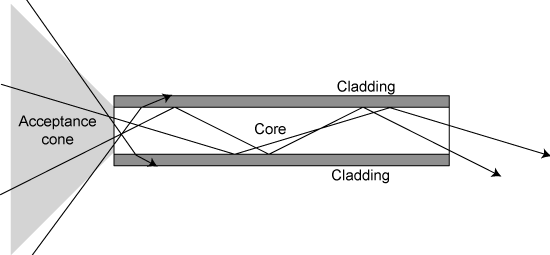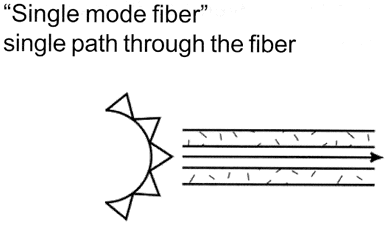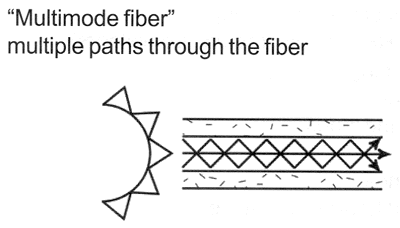Fiber optic cable consists of a bundle of glass threads, each of which is capable of transmitting messages modulated onto light waves.
Fiber optics has several advantages over traditional metal communications lines: Fiber optic cables have a much greater bandwidth than metal cables.
Benefits of Fiber Optics vs. Copper
- Low loss of signal over long distances
- Large data-carrying capacity
- Greater resistance to electromagnetic noise from outside
- No electromagnetic radiation
- High electrical resistance near high-voltage equipment or different earth
- Low weight
- No crosstalk between cables
How fiber optics work?

At one end of the system is a transmitter. The transmitter accepts coded electronic pulse information coming from copper wire. It then processes and translates that information into equivalently coded light pulses. A light-emitting diode (LED) or an injection-laser diode (ILD) is used for generating the light pulses. Using a lens, the light pulses are funneled into the fiber-optic medium where they transmit themselves down the line.
Light pulses move easily down the fiber-optic line because of a principle known as total internal reflection. "This principle of total internal reflection states that when the angle of incidence exceeds a critical value, light cannot get out of the glass; instead, the light bounces back in. There it's possible to transmit information down fiber lines in the form of light pulses.
Single Mode Fiber

Single Mode cable is a single stand of glass fiber with a diameter of 8.3 to 10 microns that has one mode of transmission. Carries higher bandwidth than multimode fiber
Multimode cable is made of glass fibers, with a common diameter in the 50-to-100 micron range for the light carry component Multimode fiber gives you high bandwidth at high speeds over medium distances. 
Light waves are dispersed into numerous paths, or modes, as they travel through the cable's core. Long cable runs (greater than 3000 feet), multiple paths of light can cause signal distortion at the receiving end, resulting incomplete data transmission.
 ශිල්ප 64
ශිල්ප 64